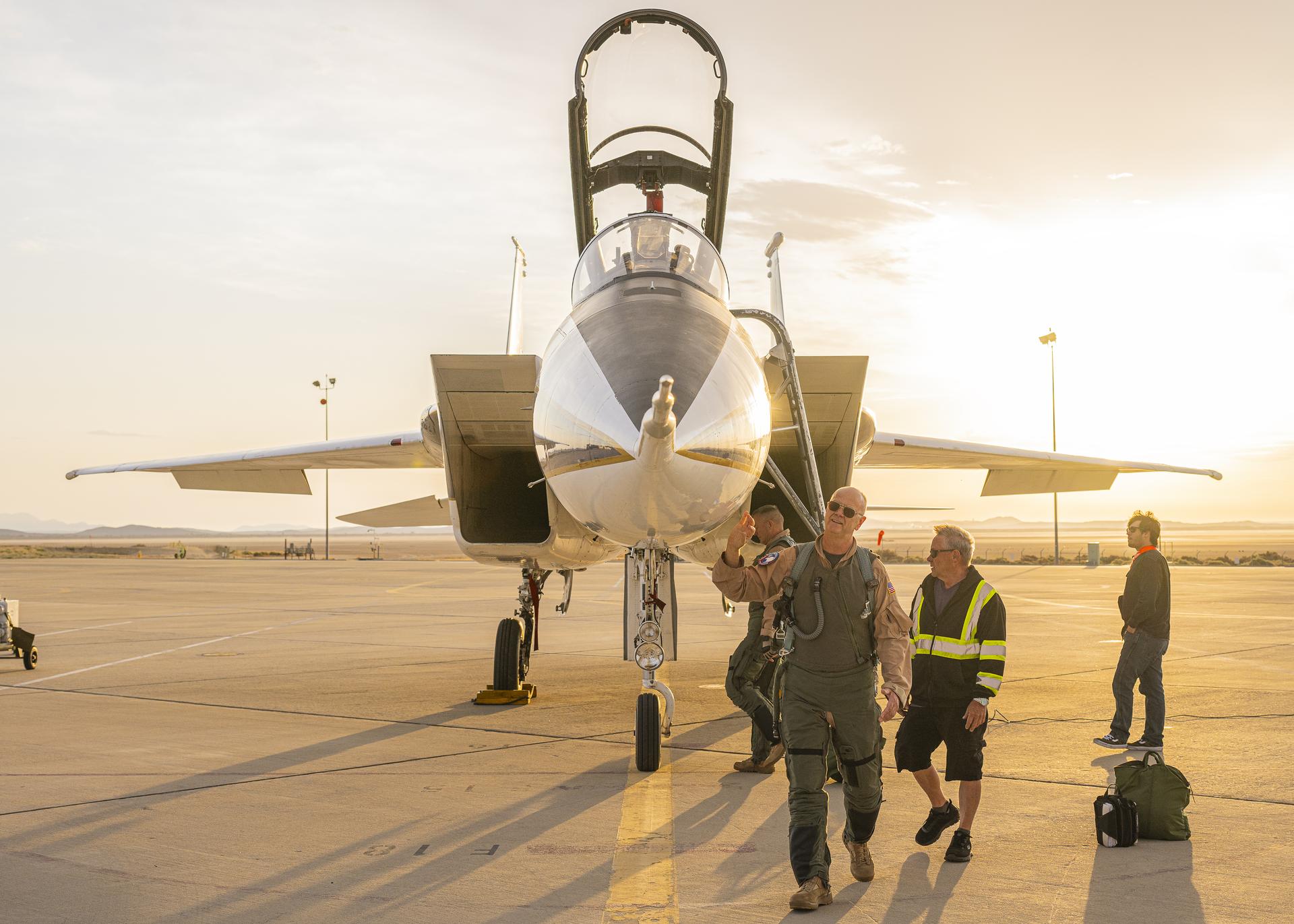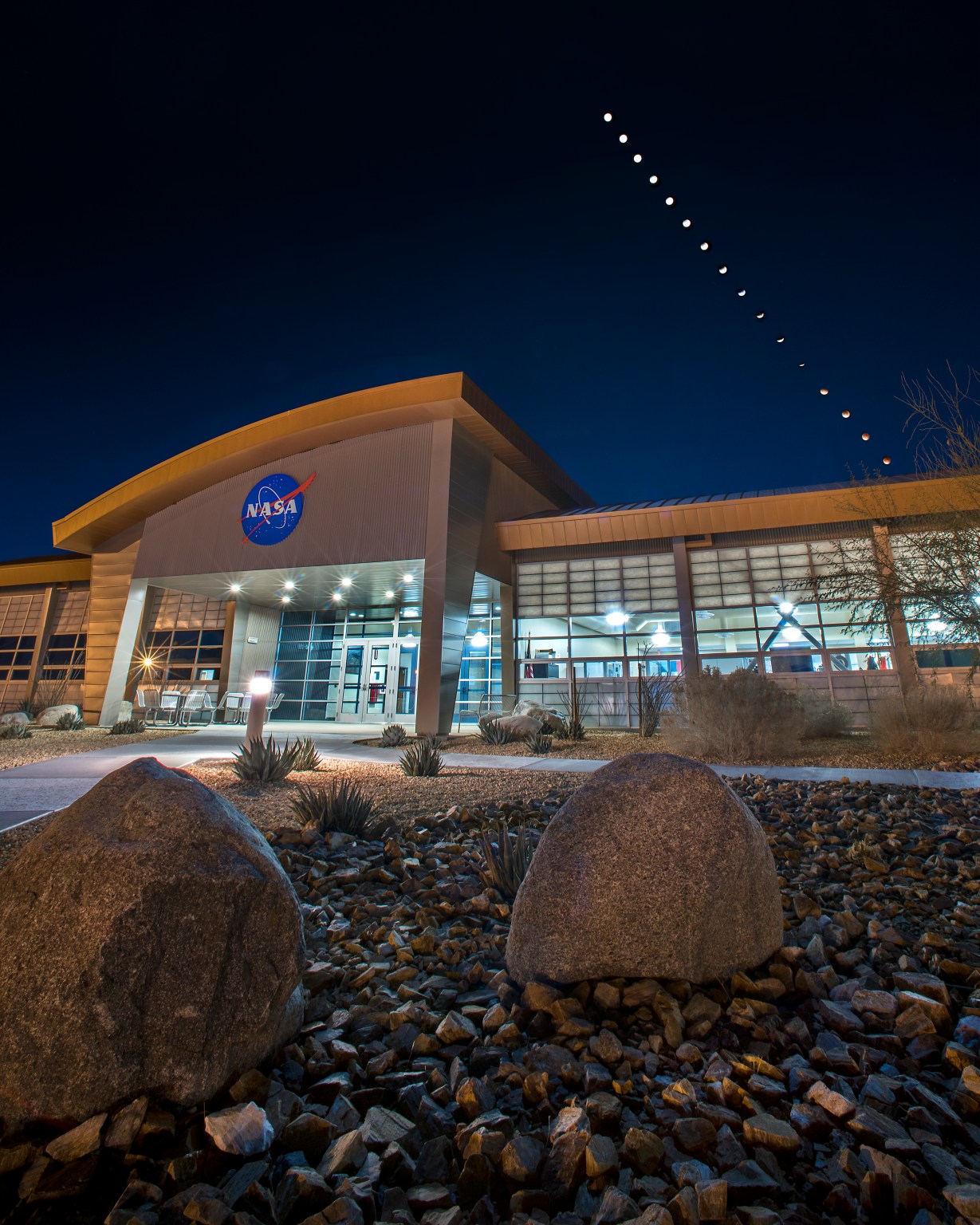3 min read
Preparations for Next Moonwalk Simulations Underway (and Underwater)
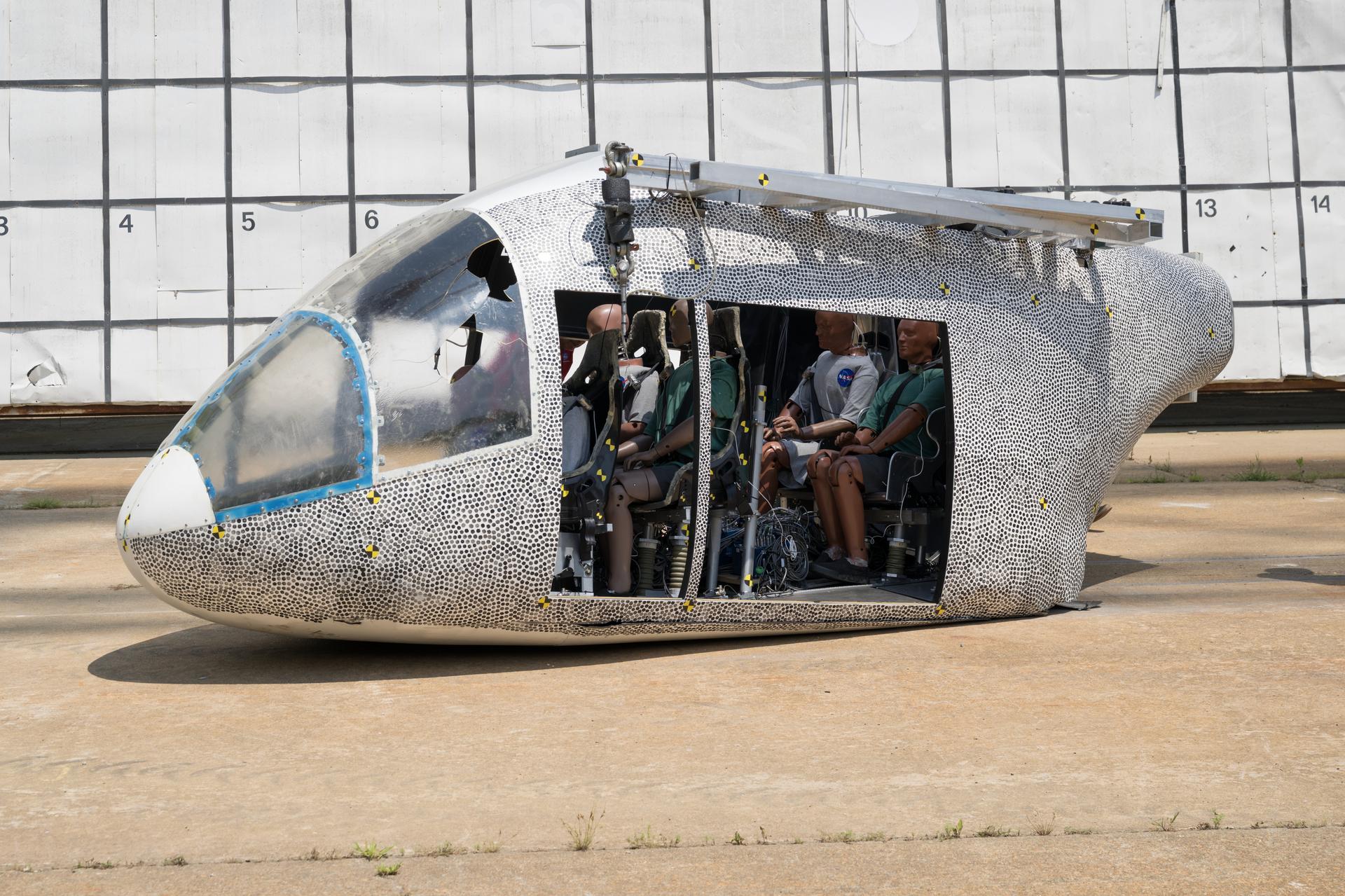
As the aviation industry works to develop new air taxis and other electric aircraft made from innovative, lightweight materials, there’s a growing need to understand how those materials behave under impact. That’s why NASA is investigating potential air taxi materials and designs that could best protect passengers in the event of a crash.
On June 26 at NASA’s Langley Research Center in Hampton, Virginia, researchers dropped a full-scale aircraft body modeled after an air taxi from a tall steel structure, known as a gantry.
The NASA researchers behind this test and a previous one in late 2022 investigated materials that best absorb impact forces, generating data that will enable manufacturers to design safer advanced air mobility aircraft.
“By showcasing elements of a crash alongside how added energy-absorbing technology could help make the aircraft more robust, these tests will help the development of safety regulations for advanced air mobility aircraft, leading to safer designs,” said Justin Littell, test lead, based at Langley.
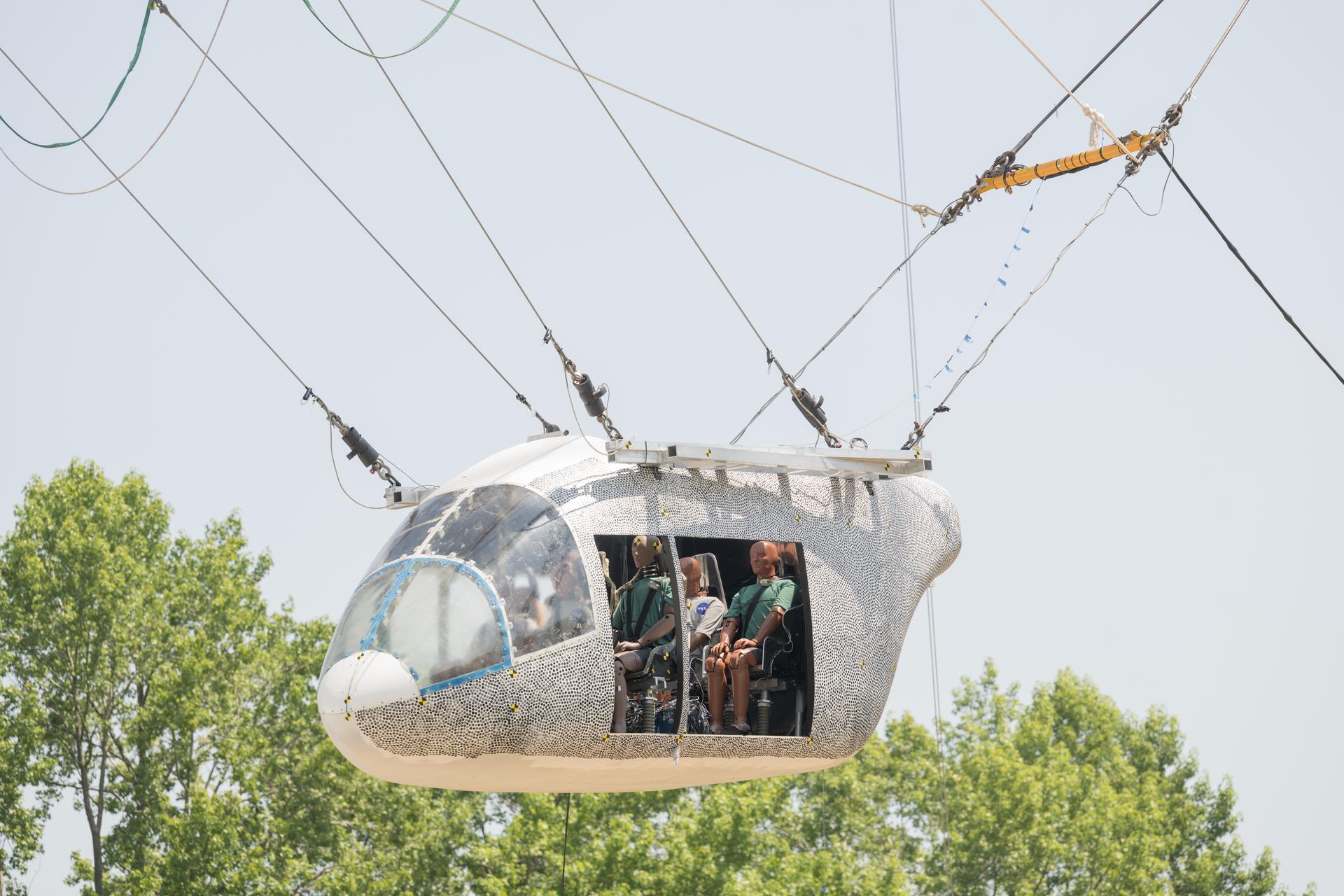
During the June test, the aircraft was hoisted about 35 feet into the air and then released. It swung forward before crashing to the ground. The impact conditions were like the prior test in 2022, but with the addition of a 10-degree yaw, or twist, to the aircraft’s path. The yaw replicated a certification condition required by Federal Aviation Administration regulations for these kinds of aircraft.
After the drop, researchers began to evaluate how the structure and batteries withstood the impact. As expected, the material failures closely matched predictions from computer simulations, which were updated using data from the 2022 tests.
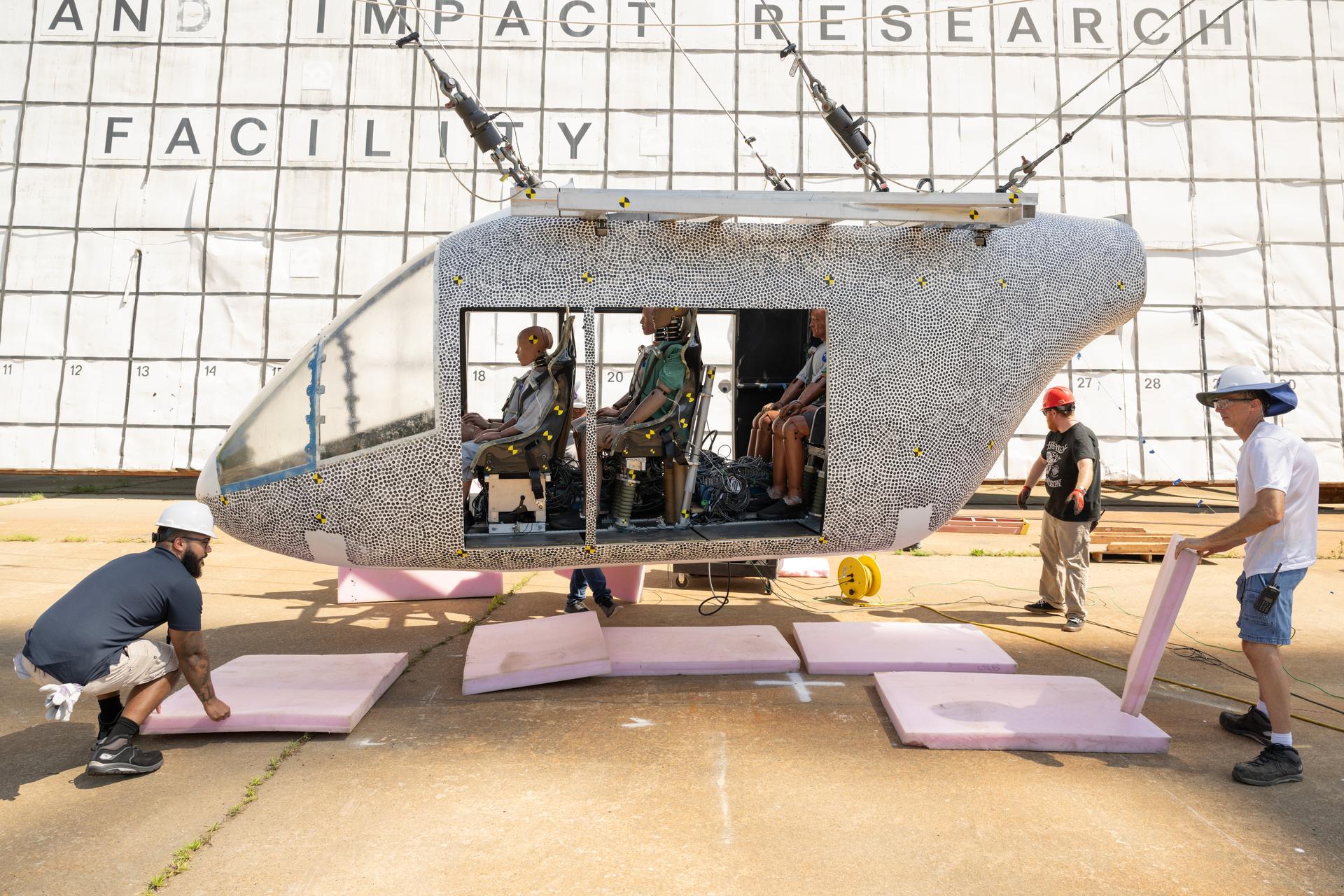
An aircraft body modeled after an air taxi with weighted test dummies inside is being prepared for a drop test by researchers at NASA’s Langley Research Center in Hampton, Virginia. The test was completed June 26 at Langley’s Landing and Impact Research Facility. The aircraft was dropped from a tall steel structure, known as a gantry, after being hoisted about 35 feet in the air by cables. NASA researchers are investigating aircraft materials that best absorb impact forces in a crash.
The aircraft included energy absorbing subfloors, similar to crumple zones in cars, which appeared to crush as intended to help protect the seats inside. The battery experiment involved adding mass to simulate underfloor battery components of air taxis to collect acceleration levels. Once analyzed, the team will share the data and insights with the public to enhance further research and development in this area.
Lessons learned from these tests will help the advanced air mobility industry evaluate the crashworthiness of aircraft designs before flying over communities.
The work is managed by the Revolutionary Vertical Lift Technology project under NASA’s Advanced Air Vehicles Program in support of NASA’s Advanced Air Mobility mission, which seeks to deliver data to guide the industry’s development of electric air taxis and drones.

